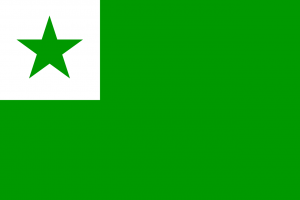Language/Esperanto/Grammar/Plurals
Hi Esperanto learners!😊
Learning Esperanto Grammar can be a challenge, but it's also a lot of fun! In this lesson, we'll be looking at plurals in Esperanto.
What are Plurals?
Plurals are words that refer to more than one person, place, or thing. In English, we usually add an 's' to the end of a word to make it plural. For example, the word "cat" becomes "cats" when it is plural.
In Esperanto, plurals are formed differently. Instead of adding an 's', you add a 'j'. For example, the word "kato" (cat) becomes "katoj" (cats).
Plural Endings
The ending 'j' is used for most nouns in Esperanto. However, there are some exceptions. Here are the different endings for plurals in Esperanto:
- Nouns ending in 'o': add 'j' (e.g. kato → katoj)
- Nouns ending in 'a': add 'j' (e.g. hundo → hundoj)
- Nouns ending in 'e': add 'j' (e.g. birdo → birdoj)
- Nouns ending in 'i': add 'j' (e.g. floro → floroj)
- Nouns ending in 'u': add 'j' (e.g. domo → domoj)
- Nouns ending in 'an': add 'oj' (e.g. urbo → urboj)
- Nouns ending in 'on': add 'oj' (e.g. leono → leonoj)
- Nouns ending in 'ar': add 'oj' (e.g. akvo → akvoj)
Plural Adjectives
Adjectives also change when they are used with plural nouns. To make an adjective plural, you add the ending 'aj'. For example, the word "bela" (beautiful) becomes "belaj" (beautiful) when it is used with a plural noun.
Plural Pronouns
Pronouns also change when they are used with plural nouns. To make a pronoun plural, you add the ending 'j'. For example, the word "mi" (I) becomes "ni" (we) when it is used with a plural noun.
Practice
Now that you know how to form plurals in Esperanto, it's time to practice! Try making the following words plural:
- domo (house)
- hundo (dog)
- floro (flower)
Answer: domoj, hundoj, floroj.
To improve your Esperanto Grammar, you can also use the Polyglot Club website. Find native speakers and ask them any questions!
If you have any questions, please ask them in the comments section below.
Feel free to edit this wiki page if you think it can be improved. 😎
Videos
Esperanto lesson 2: Nouns, adjectives, plurals, and articles - YouTube
Learn Esperanto - Direct Method 01 - YouTube
Esperanto lesson 1: Alphabet and Pronunciation - YouTube
Esperanto lesson 3: Pronouns, infinitives, present tense, adverbs ...
Esperanto Basics 1 - YouTube


